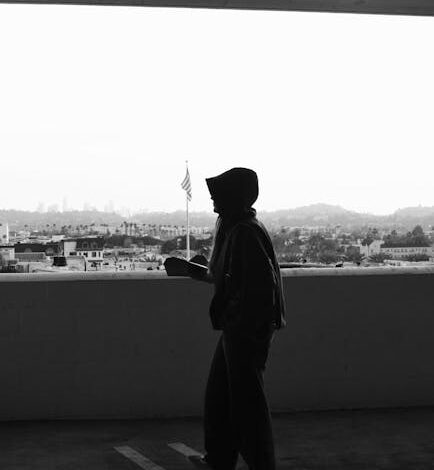Hollywood is not taking kindly to the AI-generated actress Tilly Norwood.

Hollywood is not taking kindly to the AI-generated actress Tilly Norwood.
Estimated reading time: 7 minutes
- Hollywood’s widespread resistance to the AI-generated actress Tilly Norwood highlights deep concerns about human artistry, job security, and authenticity in entertainment.
- AI-generated performers like Tilly evoke the “uncanny valley” effect, raising questions about their ability to genuinely convey human emotion and the ethical implications of replacing human talent.
- The 2023 WGA and SAG-AFTRA strikes underscored Hollywood’s urgent demand for robust AI regulation to protect creatives’ likenesses, intellectual property, and livelihoods.
- The industry must establish clear ethical guidelines, foster hybrid AI-human collaborations, and invest in reskilling professionals to integrate AI responsibly without sacrificing human creativity.
- The future of storytelling should leverage AI as an enhancing tool for new narratives, while unequivocally valuing human connection, authentic artistry, and ethical considerations at its core.
The shimmering lights and historic allure of Hollywood have always been powered by human ingenuity, raw talent, and the undeniable magic that real personalities bring to the screen. Yet, a new, synthetic presence has begun to ripple through Tinseltown: the AI-generated actress. While virtual influencers have successfully navigated the digital landscape of social media and advertising, the prospect of an AI-powered performer stepping into leading roles is sparking widespread unease, and in many corners, outright hostility. At the center of this burgeoning storm is Tilly Norwood, a digital creation whose very existence is challenging the bedrock of the entertainment industry.
Her sudden emergence has ignited a fervent debate, polarizing industry insiders who now face the complex intersection of technological advancement with the livelihoods and artistic integrity of thousands of professionals. Is Tilly Norwood merely a precursor to an inevitable future, or does she represent a clear boundary that Hollywood creatives are staunchly refusing to let AI cross? The industry’s reaction has been anything but welcoming, forcing a profound re-evaluation of authenticity, artistry, and the future of human contribution in an increasingly automated world.
The Uncanny Valley of Digital Stardom
The immediate and palpable buzz surrounding Tilly Norwood isn’t just about the fact of her existence; it’s profoundly about what she embodies for the creative community. The seed fact at the heart of this controversy highlights the ambitious vision behind her: Tilly Norwood is not real, but the company that created her hopes that she’s the first of many AI-generated stars. This statement alone casts a long shadow over the potential future awaiting Hollywood.
For many, Tilly Norwood exemplifies the unsettling “uncanny valley” phenomenon – that peculiar psychological response where something looks almost, but not quite, human, evoking feelings of revulsion or discomfort rather than admiration. Despite the impressive technical sophistication behind her creation, there’s an inherent lack of genuine presence, a perceived absence of soul that both discerning audiences and seasoned industry veterans are quick to identify.
Human actors dedicate years to mastering their craft, learning to convey the subtlest nuances of emotion through a vast repertoire of facial expressions, intricate body language, and vocal modulations. This complex, often spontaneous, tapestry of human experience is precisely what allows a performance to resonate deeply with an audience. An AI, regardless of how advanced its algorithms and data sets, currently operates on mimicry. It can simulate, but can it truly *feel*? Can it bring the unpredictable flash of genius or the profound vulnerability that defines iconic human performances? The creative community argues emphatically that it cannot, viewing Tilly not as a marvel of innovation, but as a sterile imitation that fundamentally devalues the very essence of their art.
The ethical dimensions of such creations are equally pressing. If artificial intelligence can generate a virtually limitless supply of “performers” without requiring human rights, substantial salaries, or the extensive process of creative development, what becomes of the human actor? The overarching fear extends beyond mere job displacement; it points to the potential erosion of the human element that has historically been the beating heart of storytelling across all mediums.
A Threat to Human Talent or a New Frontier?
The advent of AI-generated talent like Tilly Norwood has inevitably intensified the already contentious debate regarding automation’s role in creative industries. On one side, ardent proponents champion AI as a revolutionary tool capable of dramatically reducing production costs, offering unprecedented creative control, and overcoming the inherent limitations of human actors, such as availability, aging, or specific contractual demands. Imagine a virtual actor who is eternally available, never needs a break, can flawlessly execute any stunt, or instantly master any language without the need for endless retakes. For studios constantly balancing ambitious production schedules with tightening budgets, the operational appeal of such a prospect is undeniably clear.
Conversely, for the vast legions of human actors, writers, directors, and crew members who collectively form the intricate backbone of Hollywood, AI represents a profound existential threat. The highly publicized strikes by the Writers Guild of America (WGA) and the Screen Actors Guild – American Federation of Television and Radio Artists (SAG-AFTRA) in 2023 brought these simmering tensions into stark, public focus. A central and non-negotiable sticking point in their negotiations was the urgent need for comprehensive AI regulation.
Actors voiced grave concerns that their likenesses could be scanned and subsequently used indefinitely without explicit consent or fair compensation, effectively creating digital doubles capable of performing future roles without their continued involvement. Writers, too, expressed deep anxieties about AI generating scripts, story outlines, or even entire screenplays, thereby devaluing their intellectual property and core creative contributions. These deeply rooted concerns underscore a fundamental conflict: the drive for efficiency and cost-cutting on one hand, versus the critical importance of fair compensation, artistic integrity, and the very job security of human creatives on the other.
The entertainment industry is far more than just its finished products; it is a sprawling, interconnected ecosystem built upon human endeavors, collaborative spirit, and the diverse livelihoods it supports. Replacing human talent with algorithms doesn’t merely cut costs; it risks dismantling this entire infrastructure, potentially erasing the myriad diverse voices and invaluable perspectives that have historically enriched our cinematic and televisual landscape.
Real-world Example: The 2023 WGA and SAG-AFTRA strikes serve as a potent real-world illustration of the industry’s deep-seated anxieties. Both unions made AI regulation a core demand, seeking robust safeguards against the unauthorized use of their work and likenesses. The fear was not just a hypothetical future scenario; it was a tangible, immediate threat to their livelihoods, showcasing Hollywood’s proactive and collective stance against unchecked AI integration.
Navigating the AI Wave: Actionable Steps for the Industry
As artificial intelligence continues its rapid and seemingly inexorable integration into nearly every sector, Hollywood finds itself at a pivotal juncture. The widespread resistance to figures like Tilly Norwood sends a clear and unequivocal signal that a purely technological, replacement-oriented approach will not be accepted. Instead, a more balanced, human-centric, and ethically grounded strategy is not just advisable, but absolutely vital for the industry’s sustainable future. Here are three actionable steps the entertainment industry can take to navigate the AI wave responsibly and constructively:
1. Establish Clear Ethical Guidelines and Regulations
The most immediate and critically important step is to develop and implement a robust framework of ethical guidelines and comprehensive legal regulations specifically addressing AI’s use within entertainment. This framework must clearly define the ownership of AI-generated content, protect the unique likeness and voice of human actors from unauthorized digital replication, and ensure fair and transparent compensation when AI tools are utilized to augment or, in specific, limited contexts, replace human work. Industry unions, major studios, and relevant regulatory bodies must engage in proactive collaboration to forge legally binding agreements that consistently prioritize human creativity, intellectual property rights, and fair labor practices. This proactive and collaborative approach is essential to prevent exploitation, cultivate trust among all stakeholders, and provide much-needed clarity, ultimately setting a global benchmark for the responsible integration of AI in creative fields.
2. Foster Hybrid Collaborations Between AI and Human Creatives
Rather than viewing AI as an inevitable replacement for human talent, the entertainment industry should strategically embrace it as a powerful co-pilot or sophisticated assistant. The focus should shift towards encouraging innovative hybrid models where AI demonstrably enhances and amplifies human creativity, rather than overshadowing it. For instance, AI can be effectively deployed for more mundane, time-consuming tasks such as generating initial script drafts, assisting with visual effects pre-visualization, populating background scenes with virtual characters, or optimizing intelligent scheduling and resource management. This strategic allocation of tasks frees up human creatives to concentrate on higher-level conceptualization, exploring deeper emotional narratives, and focusing on the intricate artistic direction that only human insight can provide. Furthermore, establishing dedicated workshops and comprehensive training programs can equip filmmakers, actors, and writers with the skills to effectively leverage AI tools to augment their existing work, thereby unlocking new avenues for both creativity and efficiency without ever sacrificing the indispensable human touch.
3. Invest in Reskilling and Education for Entertainment Professionals
The landscape of film and television production is undergoing profound transformation, and it is imperative that the workforce evolves concurrently. Studios, production companies, and prominent industry organizations should make substantial investments in comprehensive reskilling and ongoing educational programs for their existing professionals. This commitment should involve offering accessible courses in AI literacy, specialized training in prompt engineering for creative applications, best practices in data management, and a thorough understanding of the ethical implications of AI technologies. By actively empowering actors, writers, editors, and other vital crew members with new and relevant skills related to AI tools, the industry can proactively create entirely new job roles and ensure that human talent remains highly relevant, adaptable, and indispensable. This forward-thinking approach transforms potential technological threats into significant opportunities, fostering a more robust, technologically savvy, and fundamentally human-centric entertainment industry.
The Future of Storytelling: A Glimpse Beyond Tilly
While the immediate controversy surrounding Tilly Norwood represents a clear point of friction, the broader and more enduring conversation transcends this single digital actress. It delves into the very future of storytelling itself. AI’s true potential extends far beyond mere mimicry; it could genuinely enable entirely new forms of narrative, foster deeply personalized viewing experiences, and facilitate interactive content that meaningfully blurs the traditional lines between audience and participant. Imagine AI-generated worlds that dynamically adapt to a viewer’s choices, or intricate characters that evolve in response to real-time audience feedback. These possibilities are undoubtedly exciting and boundless, but they must be meticulously built upon a foundational principle that unequivocally values human connection, authentic artistry, and ethical considerations.
The enduring power of film and television, indeed all forms of artistic expression, resides in its unique capacity to profoundly reflect the human condition, provoke deep thought, and evoke genuine, visceral emotion. This remains a domain where artificial intelligence, despite its staggering computational power and ever-advancing capabilities, still falls significantly short. The widespread pushback against figures like Tilly Norwood is not a Luddite rejection of progress or innovation; rather, it is a powerful and collective affirmation of the irreplaceable value of human talent, the unique spark of creativity, and the undeniable magic that only human hands, hearts, and minds can truly bring to the screen.
FAQ
- Who is Tilly Norwood and why is Hollywood reacting negatively to her?
- What is the “uncanny valley” and how does it relate to AI-generated actors?
- How did the 2023 WGA and SAG-AFTRA strikes address concerns about AI in Hollywood?
- What actionable steps can Hollywood take to integrate AI responsibly?
- Will AI eventually replace human actors and creatives in the entertainment industry?
Who is Tilly Norwood and why is Hollywood reacting negatively to her?
Tilly Norwood is an AI-generated actress whose sudden emergence in Hollywood is challenging the entertainment industry’s traditional reliance on human talent. Hollywood is reacting negatively due to widespread unease and hostility, fearing that AI-powered performers could displace human actors, devalue artistic integrity, and erode the human element crucial to storytelling.
What is the “uncanny valley” and how does it relate to AI-generated actors?
The “uncanny valley” is a psychological phenomenon where something (like a robot or digital character) looks almost, but not quite, human, causing feelings of revulsion or discomfort. Tilly Norwood, despite her technical sophistication, is seen by many as exemplifying this, lacking a genuine presence or “soul” that human performances inherently possess, leading to a perceived absence of authentic emotional depth.
How did the 2023 WGA and SAG-AFTRA strikes address concerns about AI in Hollywood?
The 2023 strikes by the Writers Guild of America (WGA) and the Screen Actors Guild – American Federation of Television and Radio Artists (SAG-AFTRA) brought AI regulation to the forefront. Both unions made it a core demand, seeking safeguards against unauthorized use of their likenesses and work, and fair compensation for AI-augmented or AI-generated content to protect their livelihoods and creative contributions.
What actionable steps can Hollywood take to integrate AI responsibly?
Hollywood can integrate AI responsibly by establishing clear ethical guidelines and legal regulations for AI use, fostering hybrid collaborations where AI enhances human creativity rather than replacing it, and investing in reskilling and education programs for entertainment professionals to adapt to new technologies and roles.
Will AI eventually replace human actors and creatives in the entertainment industry?
While AI offers efficiency and new creative avenues, the widespread resistance to figures like Tilly Norwood indicates a strong industry preference for human talent. The enduring power of storytelling lies in reflecting the human condition and evoking genuine emotion, a domain where AI currently falls short. The pushback suggests that while AI may serve as a powerful tool, it is unlikely to fully replace human actors and creatives, who bring irreplaceable artistic and emotional depth to their work.
What are your thoughts on AI’s role in Hollywood? Do you believe AI-generated actors will ever truly replace human talent, or will they serve as complementary tools? Share your perspectives and join the conversation in the comments below!




